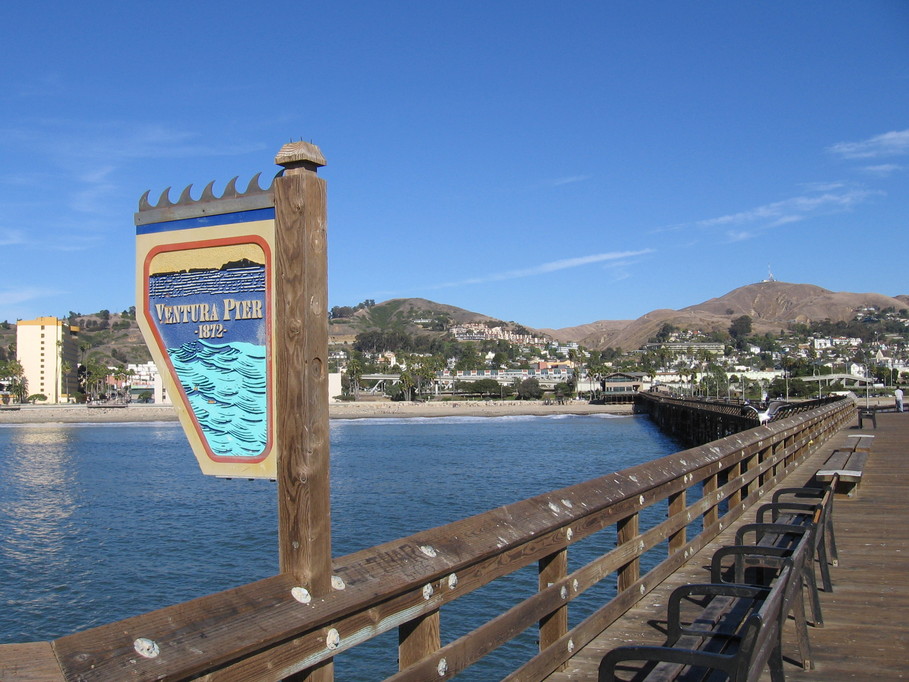In fact if you look at the picture on the right which was taken from the Ventura pier, you can actually see the hotel (just the left of the sign). For the few hours I've actually gotten outside in daylight it's a fantastic location.
The meeting has been great so far. With both the Kepler Space Telescope and the Solar Dynamics Observatory currently online, we are getting a wealth of new data on solar and stellar spots. On top of that, steady improvements in computational capabilities and remarkable advances in numerical algorithms, we are starting to get a handle on the physics behind all of the spots we see on the sun and other stars. Here are a few of the highlights.
Sun Spots with SDO and Hinode
High resolution in both time and space is enabling observations of sunspots that explore some of the fundamental details of how sunspots emerge, evolve, and dissipate. It has been known since 1909 that sunspots drive supersonic fluid outflows called Evershed flows close to the actual spot and then much slower, larger inflows called moat flows further out. Observations of these flows on very small scales over the lifetimes of sunspots have led to a possibly unified explanation for both flows.

Very interesting Nick and cool video. You'll has to keep us apprised of everything cool that's discussed.
ReplyDelete